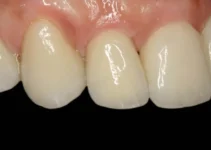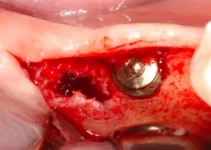Understanding the advantages of using fluoride toothpaste is crucial for maintaining optimal oral health. Fluoride, a natural mineral, helps in strengthening tooth enamel and reducing the risk of tooth decay. By incorporating fluoride toothpaste into your daily brushing routine, you provide an additional layer of protection against cavities. This article explores how fluoride functions within the toothpaste, its safety levels, and its significant role in preventive dental health practices.
The Importance of Fluoride Toothpaste
Fluoride toothpaste plays a crucial role in maintaining dental health, serving as a first line of defense against tooth decay. Many studies have demonstrated that fluoride is highly effective in preventing cavities and strengthening tooth enamel. By incorporating fluoride toothpaste into your daily oral hygiene routine, you can significantly reduce the risk of dental issues.
In addition to its preventive benefits, fluoride toothpaste also aids in the remineralization of teeth. This process helps to repair early stages of decay even before they become visible, further contributing to long-term oral health. Therefore, it is essential for individuals of all ages to use fluoride toothpaste as part of their oral care regimen.
How Fluoride Works
Fluoride works by incorporating itself into the tooth enamel, a process that strengthens teeth and makes them more resistant to acid attacks from plaque bacteria and sugars in the mouth. When you brush your teeth with fluoride toothpaste, the fluoride is applied directly to the surface of your teeth, where it restores minerals to areas that have lost them due to decay.
Another critical way fluoride functions is by inhibiting the growth of harmful oral bacteria. These bacteria are responsible for producing acids that erode enamel and lead to cavities. By controlling bacterial growth, fluoride reduces the overall production of acid in the mouth, thereby safeguarding your dental health.
Fluoride also has a systemic effect when ingested in small amounts during the early years of tooth development. This systemic fluoride becomes incorporated into the developing dental structures, creating a lifelong shield against dental caries. Therefore, both topical and systemic fluoride are vital for comprehensive dental care.
History of Fluoride in Dental Care
The history of fluoride in dental care dates back to the early 20th century, when researchers first began to notice a correlation between naturally occurring fluoride in water supplies and lower rates of tooth decay. This observation prompted further studies and led to the introduction of controlled water fluoridation, which has been endorsed by numerous health organizations, including the World Health Organization (WHO) and the American Dental Association (ADA). In the 1940s and 1950s, the first fluoride toothpastes were introduced to the market. These toothpastes revolutionized oral hygiene by making fluoride accessible to the general public. Since then, fluoride toothpaste has become a staple in households worldwide, largely due to its proven effectiveness in preventing dental caries.
Moreover, the addition of fluoride to community water supplies has been hailed as one of the most significant public health achievements of the 20th century. Numerous studies have shown that community water fluoridation can reduce the incidence of tooth decay by approximately 25% across populations, further highlighting the importance of fluoride in dental care.
For more in-depth information on fluoride toothpaste and other dental health topics, be sure to check out our additional articles. By staying informed, you can take proactive steps toward maintaining a healthy smile.
Health Benefits of Fluoride Toothpaste
Fluoride toothpaste is a crucial component in dental care for adults and children alike. The use of fluoride toothpaste has been endorsed by numerous dental health organizations worldwide because of its proven benefits. These benefits are multifaceted, addressing various aspects of oral health. In this article, we will explore the specific health benefits of fluoride toothpaste, focusing on its role in the prevention of tooth decay, the strengthening of tooth enamel, and the reduction of plaque.
With consistent use, fluoride toothpaste not only helps maintain the overall health of your teeth but also plays a pivotal role in minimizing dental issues that could otherwise lead to more serious health problems. Understanding how fluoride toothpaste works and how it contributes to keeping your teeth healthy is essential for making informed decisions about your oral hygiene routine.
Prevention of Tooth Decay
One of the most significant benefits of fluoride toothpaste is its ability to prevent tooth decay. Tooth decay is primarily caused by acids produced by bacteria in the mouth. When you consume sugary foods and drinks, these bacteria produce acid that can erode the tooth enamel, leading to cavities. Fluoride works by making the tooth enamel more resistant to this acidic attack.
Studies have shown that brushing with fluoride toothpaste can reduce the risk of tooth decay by up to 25%. This is because fluoride can help to remineralize areas of the enamel that have been demineralized by acid. The remineralization process not only repairs the early signs of decay but also makes the enamel more robust and less susceptible to future decay.
Strengthening Tooth Enamel
Fluoride toothpaste also has a powerful effect on the overall strength of tooth enamel. Enamel, the outermost layer of the tooth, is the first line of defense against cavities and decay. However, it can become weakened over time due to exposure to acidic foods, beverages, and plaque buildup.
Upon application, fluoride gets absorbed into the tooth enamel. This process creates a layer of fluorapatite, a mineral that is much more resistant to acid than the natural hydroxyapatite found in teeth. This added resistance significantly lowers the risk of enamel erosion and boosts the overall durability of your teeth.
Moreover, this strengthening effect is particularly beneficial for children whose teeth are still developing. Fluoride aids in the formation of stronger and more resilient permanent teeth, thereby reducing the incidence of dental issues later in life.
Reduction of Plaque
Plaque is a sticky, colorless film of bacteria that forms on your teeth and gums. If not removed, plaque can harden into tartar, leading to gingivitis and other forms of gum disease. Fluoride toothpaste helps in the reduction of plaque by inhibiting the growth of harmful bacteria.
This antibacterial property of fluoride goes a long way in maintaining oral hygiene. By reducing the number of bacteria in the mouth, fluoride helps in minimizing the formation of plaque. This is essential not just for preventing tooth decay, but also for gingival health.
Regular use of fluoride toothpaste, along with proper brushing and flossing techniques, can significantly lower the risk of plaque buildup, thereby safeguarding both your teeth and gums from a range of potential problems.
In conclusion, the health benefits of fluoride toothpaste are well-documented and supported by extensive research. From preventing tooth decay to strengthening tooth enamel and reducing plaque, fluoride toothpaste is an indispensable part of any effective oral hygiene routine. For more insights into dental health, be sure to check out our other articles.
Choosing the Right Fluoride Toothpaste
Fluoride toothpaste is a critical component of oral hygiene. It plays an essential role in preventing tooth decay by making the tooth enamel more resistant to acid attacks from plaque bacteria and sugars in the mouth. Choosing the right fluoride toothpaste can significantly impact your oral health, but with numerous options available, finding the perfect one for your needs can be challenging.
Understanding the different types of fluoride toothpaste available and how they cater to various age groups and specific dental conditions can help you make an informed decision. This article aims to guide you through selecting the right fluoride toothpaste for children and adults, those with sensitive teeth, and those preferring natural and organic options.
For Children vs. Adults
When choosing fluoride toothpaste for children, it’s crucial to consider their age and the concentration of fluoride. The American Dental Association (ADA) recommends using a *smear* of toothpaste, about the size of a grain of rice, for children under three years old. For children aged three to six, a pea-sized amount is sufficient. Children’s toothpaste typically contains lower fluoride levels, designed to be safe if swallowed.
Adults, on the other hand, can use toothpaste with a higher fluoride concentration. Most adult toothpaste contains 1,000 to 1,500 parts per million (ppm) of fluoride, which is effective in preventing cavities. Additionally, adult toothpaste may include other ingredients catering to specific needs, such as whitening agents, tartar control, and sensitivity reduction.
Choosing the right toothpaste for each age group ensures that everyone in the family receives the appropriate protection against cavities and maintains optimal oral health. Always supervise young children to ensure they use the correct amount of toothpaste and teach them not to swallow it.
Sensitive Teeth Formulas
If you have sensitive teeth, finding a toothpaste that provides fluoride protection while also addressing sensitivity can significantly improve your oral comfort. Toothpaste formulated for sensitive teeth usually contains ingredients like potassium nitrate or stannous fluoride, which help to block the pathways that lead to the nerves inside the teeth.
Studies have shown that these ingredients can effectively reduce sensitivity over time, providing relief from pain triggered by hot, cold, sweet, or acidic foods and drinks. Regular use of sensitivity toothpaste can help to rebuild the protective layer on your teeth, offering both fluoride protection and sensitivity relief.
Look for toothpaste that has the ADA Seal of Acceptance, indicating that the product meets the ADA’s standards for safety and effectiveness. Avoid abrasive whitening toothpaste, as it can exacerbate sensitivity. With consistent use, sensitive teeth formulas can help you enjoy your favorite foods and drinks without discomfort.
Natural and Organic Options
For those seeking a more natural approach to oral care, there are fluoride toothpaste options derived from natural and organic ingredients. These products often exclude artificial colors, flavors, preservatives, and sweeteners, making them a suitable choice for individuals who prefer a gentler formula.
Natural fluoride toothpaste can still be effective in preventing cavities while promoting a healthier mouth. Ingredients like xylitol and essential oils are commonly used for their natural antibacterial properties, which help in maintaining oral hygiene. These products may also include plant-based compounds that provide additional benefits, such as soothing inflammation and freshening breath. When selecting natural and organic toothpaste, ensure it contains fluoride unless specifically advised otherwise by your dentist. Fluoride is essential for strengthening teeth and preventing decay, and while some natural products are fluoride-free, others include naturally sourced fluoride.
In conclusion, choosing the right fluoride toothpaste involves considering factors such as age, dental sensitivity, and ingredient preferences. By understanding the different types of toothpaste available and their benefits, you can ensure you and your family maintain excellent oral health. For more insights into maintaining optimal dental care, explore our other articles on oral hygiene and dental treatments.
Proper Usage of Fluoride Toothpaste
The use of fluoride toothpaste is crucial in maintaining dental health. Fluoride is a natural mineral that helps to prevent cavities by making the tooth more resistant to acid attacks from plaque bacteria and sugars in the mouth. Understanding how to use fluoride toothpaste effectively is essential for achieving the best results in oral hygiene. Proper brushing techniques and the right frequency and quantity of use are key aspects to consider.
Fluoride toothpaste is recommended by dental professionals worldwide due to its ability to re-mineralize weakened tooth enamel, reverse early signs of tooth decay, and significantly reduce the risk of cavities. It is important to integrate it into your daily dental care routine to fully benefit from its protective properties. Equally important is ensuring it is used correctly to maximize its benefits and minimize any potential risks.
Listening to the advice of your dentist regarding the proper selection and use of fluoride toothpaste can also help tailor your dental care routine to your specific needs. Whether you have specific dental conditions or simply strive to maintain optimal oral health, this guidance can be invaluable.
Recommended Brushing Techniques
To achieve the best results with fluoride toothpaste, using the correct brushing techniques is vital. A proper brushing technique ensures that the fluoride is adequately distributed across all tooth surfaces, aiding in cavity prevention and overall oral hygiene. Here are some recommended techniques:
- Hold your toothbrush at a 45-degree angle to your gums.
- Use small, circular movements rather than vigorous back-and-forth scrubbing.
- Brush all surfaces: outer, inner, and the chewing surfaces of the teeth.
- Don’t forget to gently brush your tongue to remove bacteria and freshen breath.
It’s important to brush for at least two minutes to ensure comprehensive cleaning. Being gentle yet thorough can prevent gum damage while effectively clearing bacteria and plaque.
Investing in a good quality toothbrush, whether manual or electric, can also enhance your brushing efficacy. Electric toothbrushes, in particular, can offer more consistent brushing patterns and might be more effective in plaque removal.
Frequency and Quantity
Using fluoride toothpaste in the right amount and frequency is essential for optimal dental health. Dentists recommend brushing twice a day – once in the morning and once before bed – to maintain oral hygiene and protect against dental caries. Consistency is key; skipping brushing sessions can lead to plaque buildup and an increased risk of cavities.
For adults, a pea-sized amount of fluoride toothpaste is generally sufficient. For children, this quantity should be reduced to a smear or a grain of rice-sized amount to minimize the risk of excessive fluoride ingestion, which can lead to dental fluorosis.
It’s also important to spit out the toothpaste after brushing rather than rinsing your mouth immediately. This allows the fluoride to remain on the teeth for a longer period, enhancing its protective effects. Some experts also recommend avoiding food or drink for at least 30 minutes after brushing to allow the fluoride to fully penetrate the enamel.
Proper dental care is a lifelong commitment that pays dividends in terms of oral health and overall well-being. By incorporating fluoride toothpaste into your routine with the correct techniques and frequency, you are taking significant steps towards maintaining a healthy smile.
For more tips on maintaining optimal oral health, consider reading our other informative articles. Staying informed and proactive in your dental care routine can lead to better outcomes and a brighter smile.
Common Questions About Fluoride Toothpaste
Understanding the importance of fluoride in dental care can help you maintain healthy teeth. Here are some frequently asked questions about fluoride toothpaste.
Why is fluoride toothpaste recommended for daily use?
Fluoride toothpaste is recommended because fluoride is key in fighting tooth decay. It works by strengthening tooth enamel and making it more resistant to acid attacks from bacteria in the mouth. Regular use of fluoride toothpaste has been proven to significantly reduce the risk of cavities and tooth decay, making it a staple in daily dental care routines.

My name is Salman Kapa, a 73-year-old expert in bone regeneration and dental implantology. With decades of experience in the field, I am dedicated to advancing our understanding of oral health and hygiene. Through my research and writing, I aim to contribute to the development of innovative solutions in dental care.




